How to Process Your Emotions
Here's a simple exercise you can use to start processing your emotions in 4 steps. This is a framework called RAIC. I’ve adapted it from Tara Brach’s RAIN acronym - credit where credit is due. My adaptation changes just the final letter of Tara’s acronym. I made this adjustment to better tailor this tool to founders' heavily cognitive and action-oriented psychologies.
The four steps to process your emotions.
Step 1: Recognize what you're feeling
First, recognize what you’re feeling. Emotions are physical sensations we feel in our bodies. So drop into your body and observe the sensations. Close your eyes if that provides helpful focus. Shift your attention to your body. What do you feel in your belly? In your chest? Toes? Elbows? Back? Keep breathing as you scan your body, bringing your awareness from the bottoms of your feet to the top of your head in a slow, up-and-down sequence.
Do you feel pressure? Heat? Heaviness? Buzzing? Notice any sensations happening in your body when you bring your awareness to it - or the lack of sensation. Then map the sensations onto an emotion - name an emotion if you can, and experience the sensations of that emotion. Be open to feeling that emotion move through your body. The sensation might change, intensify, or go away.
Here are some tools to help you name your emotions:
The emotions wheel can help build your emotional vocabulary. Once you’ve noticed and experienced a sensation in your body, start in the middle of the wheel to find the broad category that emotion sits in, then travel outward to build more granular knowledge about what you’re feeling.
And the emotional heatmap can help you connect the physical sensations you felt with an emotional experience (here’s a link to the study it came from).
Step 2: Allow your feelings to exist
Then, allow yourself to feel what you’re feeling. Emotions only last in the body for 90 seconds, so give yourself permission to feel without going the extra step of thinking that you can’t, shouldn’t, or don’t have time to. This step can be surprisingly difficult, so give yourself time and space to feel what you're feeling.
It’s really common for founders at this step to tell me: "No! I can’t feel this way! 'Founders' don’t feel the way I’m feeling." Remember - you founders are people too. If you're feeling something and you're a founder, then I hate to break it to you but 'founders' do feel whatever it is you're feeling. Don’t let your job title cut yourself off from experiencing the full range of your humanity.
Step 3: Investigate why
The third step is to investigate. Be curious. Why are you feeling what you’re feeling? What’s the logic? This is the first step that pulls in your brain along with your body. Feelings come from somewhere - I promise there’s a reason you're feeling how you are. Try to understand more about your emotion - its origin, its function, whether it's useful or not - so you can pull out any signal from the noise, any helpful information that emotion is communicating to you.
Step 4: Choose what to do next (if anything)
Finally, make a choice about what to do with what you’ve learned. This step uses your brain too. You are not your feelings. You’re their witness and their mediator. When you relate to your emotions as data, again you’re using the full range of information available to make decisions.
Keep in mind that it’s not vital that you do anything about your feelings. The choice here is what’s important - pulling in your thoughts to make a cohesive, coherent decision that incorporates all the information available to you. You get to decide whether and how to action on your feelings. And don’t forget, choosing inaction can often be the wisest choice available.
Start Now
I encourage you to set a timer for 5 or 10 minutes and try this exercise now. Grab a journal or open a Notes app, then close your eyes, slow your breathing, and relax into your body. Emotions can move at a slower pace than our thoughts do, so take a beat to tune your awareness into any sensations you're feeling in your physical body as you settle into it.
After a minute or two of slowing down and tuning in, walk yourself through each of the four steps. It's okay to journal or talk out loud. There's no right or wrong way to connect with your emotions. You'll get more familiar with what works for you as you continue practicing this. Keep breathing, keep noticing, keep allowing, keep investigating, and finally, make a choice about what to do with the information you discovered.
10 minutes later...
Well...? How did it go?
I imagine that many of you dropped into your bodies and… thought about your to-do list. Or your next meeting. Or.. that last pitch that could’ve gone better. That makes me curious about whether you typically operate in thought → action, thought → action, cognition-only, no-thoughts-allowed founder failure mode. You might need more time and some deeper, intentional breaths to slow your mind down enough to connect into what you're feeling in your body. If you gave yourself the full 10 minutes, or maybe 15, I’m so curious about what your emotional experience would be. And what data you’re missing.
I imagine that others of you dropped into your bodies and felt.. Exhausted. So tired. So overwhelmed. And maybe that scared you. To know how tired you are, or to scratch the surface of how many other emotions you're feeling without being fully aware of them. Because what if you really listened to yourself and gave yourself exactly what you needed? You might be thinking that you would have quit your startup a long time ago because it's not worth the accumulated pain, despair, or anxiety.
You all haven’t heard my advice either. You aren’t thinking about what you're feeling - you're just feeling it. You might be caught in the emotion → action, emotion → action reactive or paralyzing failure modes. You folks need to start thinking about what you’re feeling.
My advice to you is - to take what you feel. And then to think about it. And make a choice about whether you can give yourself what you need, given what your goals are. For example: is quitting your startup right now actually what you need, or do you just have a debt of rest you actually need to spend a few days or weekends getting current on? If your emotions are telling you that you need something big that is incompatible with your goals, then give yourself a little piece of what you need right now and defer the bigger resolution to when you reasonably get it.
The greater opportunity in all of this is for all of your parts to work in harmony. Your thoughts and your feelings. Neither of them more important than, or less helpful than the other. Both are recruited in service of your goal.
I encourage founders to do this exercise multiple times a day - or whenever it's needed. Practicing even just the first two steps - in between meetings or calls - can be a calming, grounding exercise. With practice, this workflow will become automatic. You won't have to set aside time or conscious thought to it - you'll be connected to your emotions and incorporating them into your workstream, making wise choices habitually.
Keep practicing. You'll get there.



